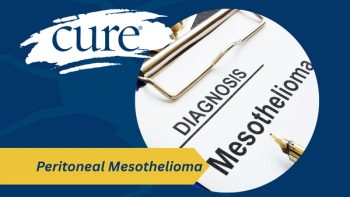
Lessons on Pet Cancer From a Cancer Survivor
A two-time cancer survivor loses her wonderful dog to, of course, cancer and offers advice to avoid some pet cancer pitfalls.
After almost twelve years together, our healthy, perfect-weight, exercised-daily dog who was estimated to live to fifteen based on her breed, was gone in six days. Ultrasounds and x-rays had found cancer tumors in both her kidneys, as well as her spleen, and lungs. She abruptly left four devastated people behind—me, my husband and our two grown daughters. Why cancer? Why so fast? Why no real treatment options? Here are the painful pet cancer lessons that we learned.
Become A More Observant Pet Owner
Animals, including beloved family pets, hide their illness. Pets often won’t blatantly show their symptoms until cancer has progressed too far to successfully treat. Look for subtle changes and get your furry friend checked out right away. Do not assume that changes are age-related.
Our dog started growling when we would lift her up. We were thinking it was age-related grumpiness, but we now realize she may have been having abdominal discomfort.
Our dog was not as cuddly with us. She would move to the other end of the couch and stretch out more. Again, she was probably having abdominal pain rather than becoming less social than she had always been with us.
Our dog was sometimes a little off her food and we thought, okay, let’s ask the vet and maybe there is better food to use and maybe some supplements for her? That was when we found the cancer. Her cancer pain was probably affecting her eating.
Our dog began to go off and hide in a small bathroom or tuck her head under someone’s bedspread instead of hanging out with us. We thought she was just tired. She may have been trying to find a “safe” place because her instincts were telling her she was no longer well enough to defend herself.
Consider biopsying “normal” fatty lumps
Nine times out of ten, these lumps are nothing other than harmless fatty cysts, however, the lump might be the early stage of removable cancer. If you are the owner of a pet with cancer, you and your pet will be glad to catch and treat it early.
Consider mid-life scans for your pet
Early detection is key for early treatment and improved survival. If our family had caught the cancer when it was only in one kidney (where the largest tumor was), removing the tumor before the cancer had metastasized to the other kidney, spleen, and lungs could have extended our dog’s life.
Be proactive for your pet
They can’t talk to you. Our dog Mitzi was raised by all four of us. She had a unique relationship with each of us. She was intuitive. We were her pack. My husband and I treated her more like the youngest child than as the pet. Mitzi was fifth in a series of sometimes overlapping pets that we have shared our home with over the past thirty-three years. She connected with the four people even after our two grown children left the nest. Her pre-mature death leaves one dead and four wounded behind. Our home hasn’t been this empty since before we got married over thirty-three years ago.
If one person who reads this goes on to follow these suggestions to extend the life and quality of life for their pet, then writing this article through my tears will have been well worth it. And well, Mitzi would approve too, I know she would.





